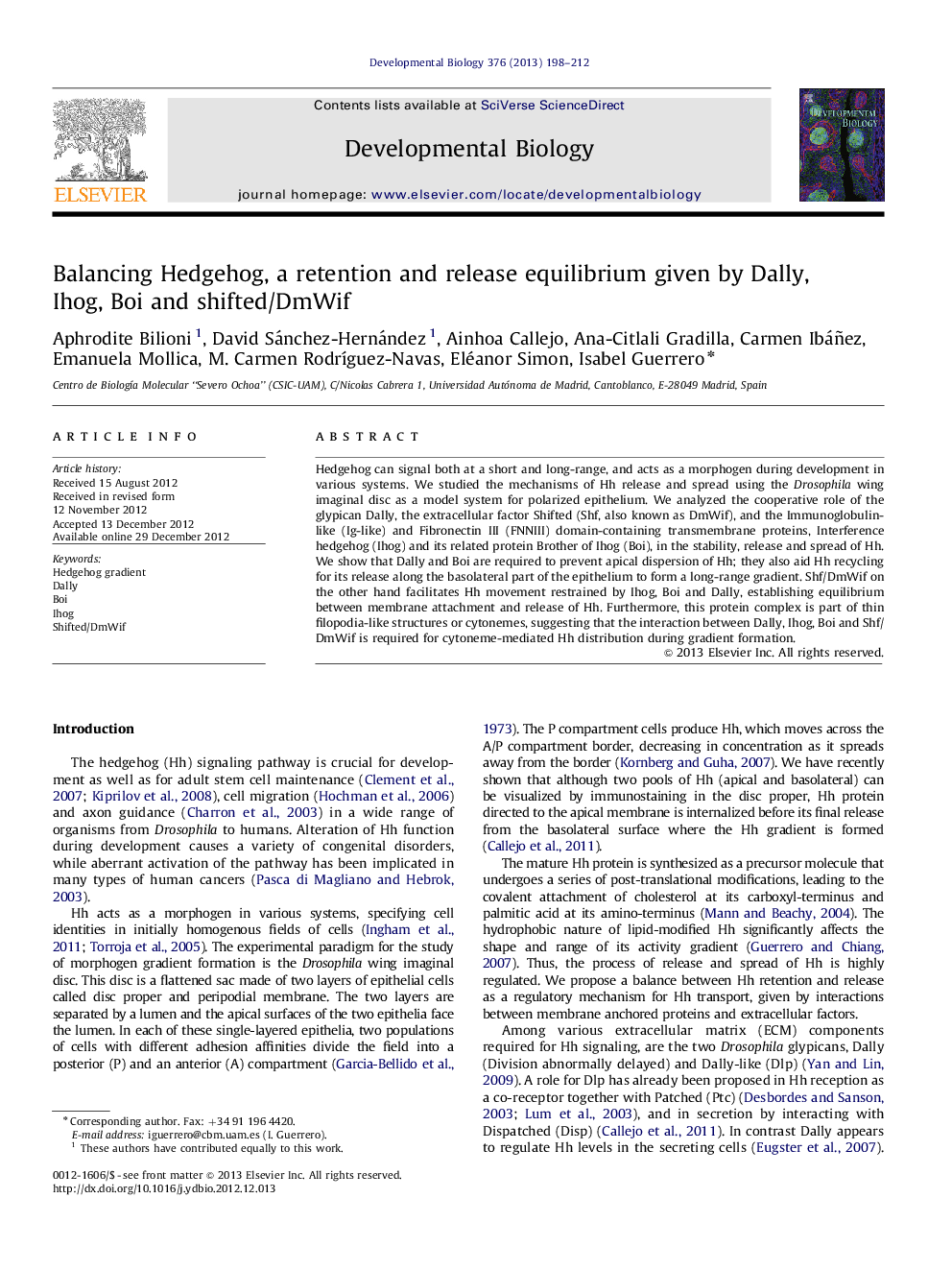| Article ID | Journal | Published Year | Pages | File Type |
|---|---|---|---|---|
| 2173096 | Developmental Biology | 2013 | 15 Pages |
Hedgehog can signal both at a short and long-range, and acts as a morphogen during development in various systems. We studied the mechanisms of Hh release and spread using the Drosophila wing imaginal disc as a model system for polarized epithelium. We analyzed the cooperative role of the glypican Dally, the extracellular factor Shifted (Shf, also known as DmWif), and the Immunoglobulin-like (Ig-like) and Fibronectin III (FNNIII) domain-containing transmembrane proteins, Interference hedgehog (Ihog) and its related protein Brother of Ihog (Boi), in the stability, release and spread of Hh. We show that Dally and Boi are required to prevent apical dispersion of Hh; they also aid Hh recycling for its release along the basolateral part of the epithelium to form a long-range gradient. Shf/DmWif on the other hand facilitates Hh movement restrained by Ihog, Boi and Dally, establishing equilibrium between membrane attachment and release of Hh. Furthermore, this protein complex is part of thin filopodia-like structures or cytonemes, suggesting that the interaction between Dally, Ihog, Boi and Shf/DmWif is required for cytoneme-mediated Hh distribution during gradient formation.
► A new view of Hedgehog release in Drosophila polarizad ephitelia. ► Role of Dally and Boi to avoid the apical Hedgehog release from producing cells. ► Ihog/Boi and Shifted counteracting effects on the basolateral Hedgehog release. ► Dally, Shifted, Boi, and Ihog interact with Hedgehog in cytonemes.
